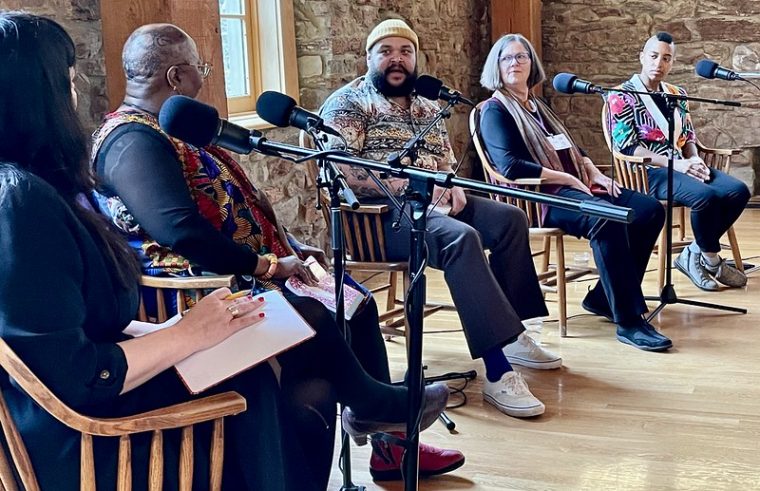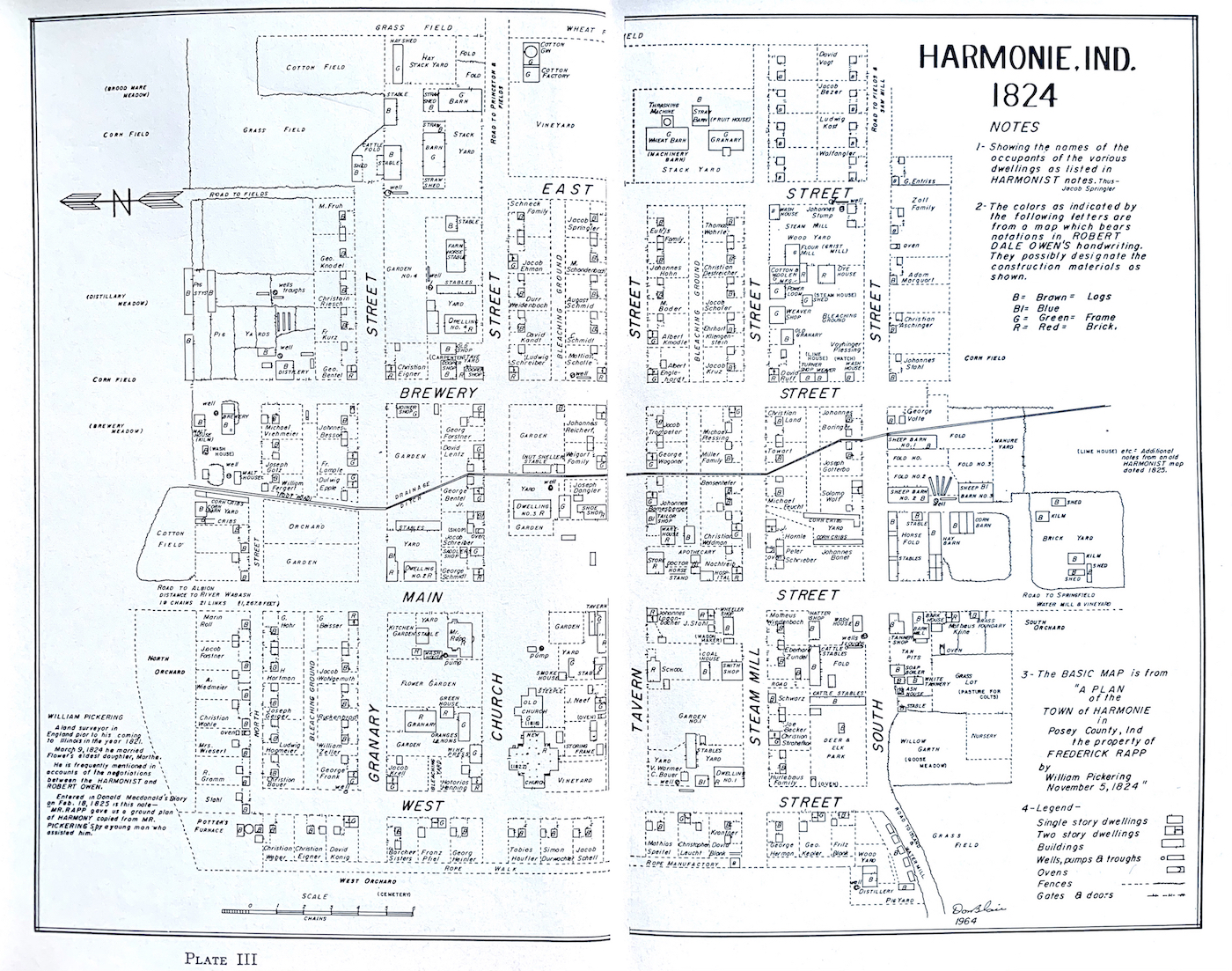The Social Alchemy Symposium was a participatory mini-conference that took place in New Harmony, Indiana April 10-13, 2022.
You can listen to audio from the symposium here:
More about the symposium: Twice the site of utopian experiments in communitarian living, New Harmony is a town rich in beauty, culture, and history. And it made the perfect location for more than 150 people to gather for the symposium in person and enjoy conversations led by more than 20 notable authors, artists, designers, and philosophers from Indiana and around the world as we explored the role of utopian thinking.
With more than 1,300 viewers (both in-person and virtual), the symposium connects the history of utopias in this small town with our ongoing efforts at Big Car Collaborative to build an inclusive and affordable arts-based intentional community at our Cruft Street campus.
The symposium — organized through a partnership between Big Car Collaborative, the University of Southern Indiana, Historic New Harmony, and the New Harmony Gallery of Contemporary Art — was made possible by Indiana Humanities, the Efroymson Family Fund, and New America. Additional partners included the Indiana State Museum and PATTERN Magazine.
Check out pictures from the symposium.
Here’s a reading list from the symposium and about utopian thinking.
Check out the full program schedule here.
Some related PATTERN Magazine publications
- 2022 Hoosier Pride Runs Deep by Phillip Barcio about Docey Lewis & by Iris Williamson
- 2020 Jane & Marguerite: A tale of two women who shared & shaped New Harmony by Shauta Marsh
Some highlighted sessions & recordings
Dreaming of New Worlds: World Building for Community Work with Maurice Broaddus [author]. Listen here.
Utopian Literature & Writing in New Harmony moderated by Jim Walker with Susan Neville [fiction writer/essayist], Matthew Graham [Indiana Poet Laureate], & Kevin McKelvey [poet & UIndy professor]. Listen here. By the way, this is the poem Matthew talks about where, yes, Big Car gets its name.
Utopic Cultural Projects Conversation – Visual Art, Music & Movement moderated by Shauta Marsh with Keesha Dixon [Asante Arts Institute of Indianapolis], Docey Lewis [designer], Lauren Curry [Indy Movement Arts Collective] & Oreo Jones [musician & Big Car artists & WQRT FM manager]. Listen here.
Inclusion & access with the Indianapolis Cultural Trail & Neighborhood Development with DeAmon Harges [neighborhood organizer] & Brian Payne [CEO, Central Indiana Community Foundation & driving force behind the Cultural Trail]. Listen here.
Utopian Architecture with Marsh Davis [president, Indiana Landmarks], Lourenzo Giple [deputy director of planning, preservation, & design, City of Indianapolis], Adam Thies [associate VP for capital planning at Indiana University]. Moderated by Anne Laker [writer & Social Alchemy symposium team member]. Listen here.
New Harmony Meets Columbus, Indiana with Richard McCoy [Landmark Columbus Foundation], Kathryn Armstrong [Columbus Area Arts Council], & Kent Schuette [professor of landscape architecture & planning at Purdue]. Moderated by Chris Merritt. Listen here.
Here’s a great way to listen to the story of the origin of New Harmony:
A quick history of New Harmony Pop. 719 (as of 2019)
MISSISSIPPIAN INDIGENOUS PEOPLE: Native Americans maintained complex, productive communities in the area, including earthen mounds built for ceremonial and cosmological purposes.
THE HARMONISTS: German farmer George Rapp and 400 followers arrived in 1815, building New Harmony as a community based on productivity, worker-owned industries, and shared resources.
THE OWENITES: The Rappites sold the land in 1825 to Robert Owen, a Welsh socialist. At its height, 1,000 Owenites were part of a “Village of Unity and Mutual Cooperation” prioritizing worker rights, scientific research, and artistic expression.
JANE BLAFFER OWEN: For nearly seven decades, Jane Blaffer Owen was the driving force behind the restoration and revitalization of the town of New Harmony, Indiana. Owen had a vision for the town, bringing in and commissioning renowned architects, visual artists, musicians, and writers. Her time there is often referred to as the town’s “third utopia.”
Why we at Big Car did this: As a nonprofit organization working in art-based community development, we’re very interested in intentional and inclusive communities designed for all to thrive. That’s our goal for our 19-building, 16-home, one-block Cruft Street Commons project in Garfield Park –– to make an arts-focused, socially cohesive mini neighborhood. And this work is inspired by our research into historic utopias in New Harmony and elsewhere.
Why is this called Social Alchemy? In our research about New Harmony, we discovered that Father George Rapp — founder of the Harmonists, the first utopian experiment in New Harmony — studied alchemy and was trying to make gold and other precious commodities to fund his vision of utopia. Today, with New Harmony already a successful town with much to offer (including events and public programs), this project and symposium combines all the assets of New Harmony: the people who live there, the architecture, art, and food to celebrate and expand the town’s magic to Indianapolis and hopefully even further. We’re calling this mixture of everything Social Alchemy. If you haven’t already, this audio story we made as part of our overall Social Alchemy project is an entertaining primer on how New Harmony began.
Learn more about the overall Social Alchemy project.


